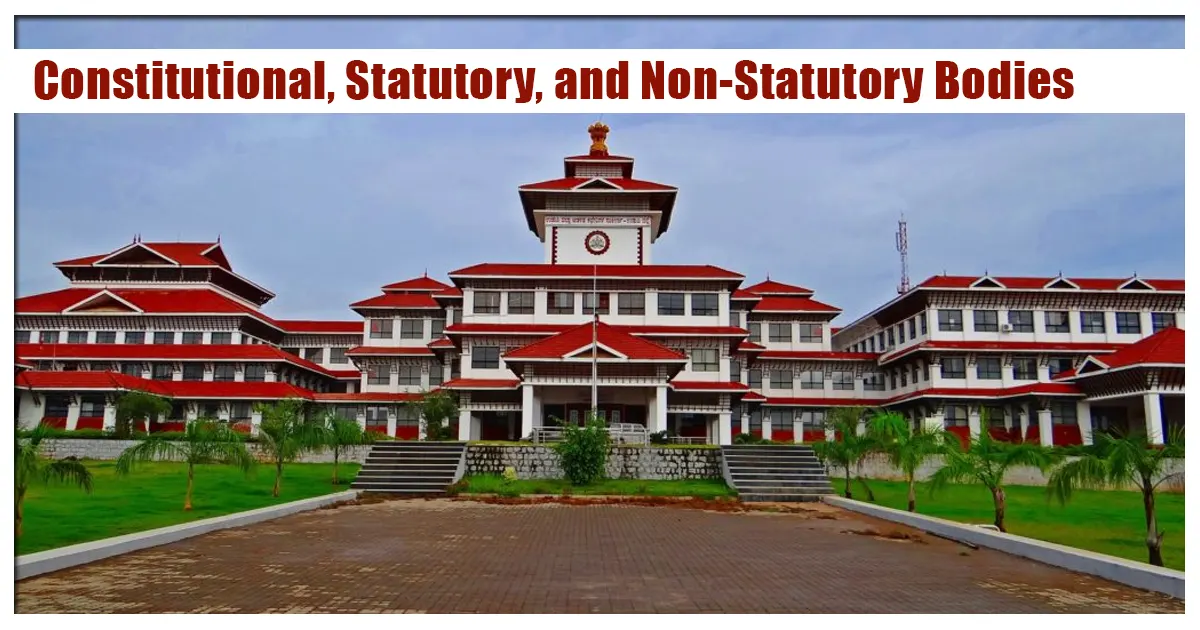
Context (IE): In recent years, opposition parties have voiced concerns over the autonomy, integrity, and credibility of India’s constitutional bodies.
Constitutional Bodies
- Definition: These bodies are explicitly outlined in the Indian Constitution and are crucial for ensuring proper governance and checks and balances within the system.
- Key Characteristics:
- Created directly by the Constitution of India.
- Can only be modified or dissolved through a constitutional amendment.
- Operates independently with a significant level of autonomy.
- Examples:
- Election Commission of India (ECI): Responsible for conducting free and fair elections.
- Comptroller & Auditor General (CAG): Audits government expenditures, ensuring accountability.
- Union Public Service Commission (UPSC): Oversees merit-based recruitment for civil services.
- Finance Commission: Advises on the distribution of tax revenue between the Centre and states.
- National Commissions for SCs, STs, and Minorities: Works towards social justice for marginalized groups.
Statutory Bodies
- Definition: Created by a specific law or act passed by Parliament or state legislatures, these bodies have defined regulatory or advisory functions.
- Key Characteristics:
- Established by a statute (law) rather than the Constitution.
- Their powers, functions, and responsibilities are defined by the act that creates them.
- They can be modified or dissolved through an amendment to the act.
- Examples:
- Securities and Exchange Board of India (SEBI): Regulates the securities market and protects investors.
- National Green Tribunal (NGT): Ensures compliance with environmental laws.
- Insurance Regulatory and Development Authority of India (IRDAI): Regulates the insurance industry.
- Central Vigilance Commission (CVC): Addresses corruption within public administration.
- Telecom Regulatory Authority of India (TRAI): Oversees telecommunications and digital transactions.
Non-Statutory (or Executive) Bodies
- Definition: These bodies are formed through an executive order or government resolution rather than the Constitution or a legislative act.
- Key Characteristics:
- Established by the government for specific purposes.
- Can be modified, restructured, or dissolved by government decision without requiring legislative changes.
- Primarily advisory or policy-implementing bodies rather than regulatory.
- Examples:
- NITI Aayog: Replaced the Planning Commission to support cooperative federalism.
- National Task Force for COVID-19: Coordinated efforts to manage the COVID-19 response.
- Expert Committees and Task Forces: Created temporarily to address issues like economic reforms, social development, and crisis management.
 Chinmaya IAS Academy – Current Affairs Chinmaya IAS Academy – Current Affairs
Chinmaya IAS Academy – Current Affairs Chinmaya IAS Academy – Current Affairs